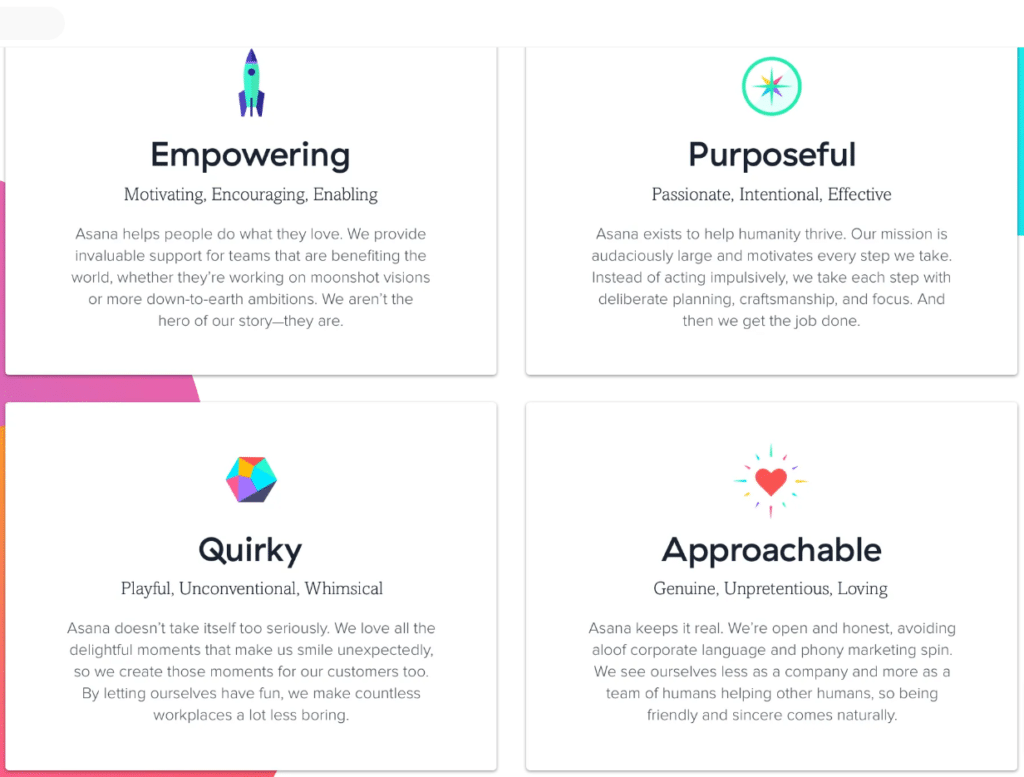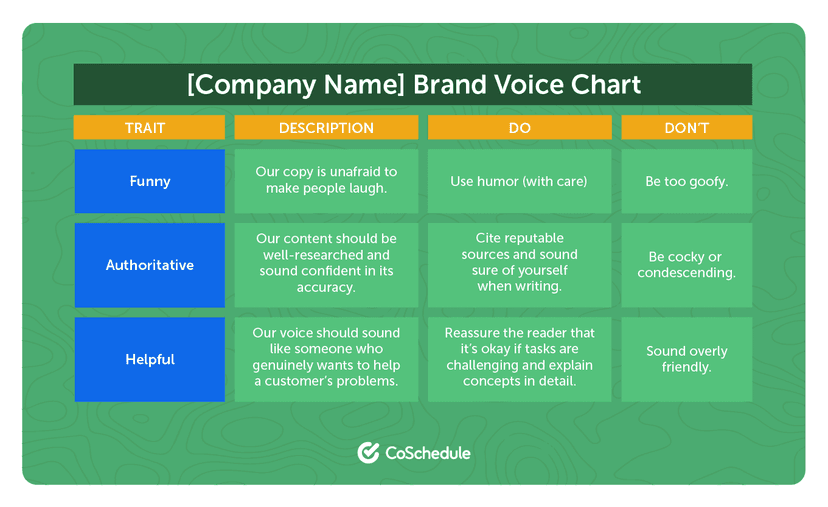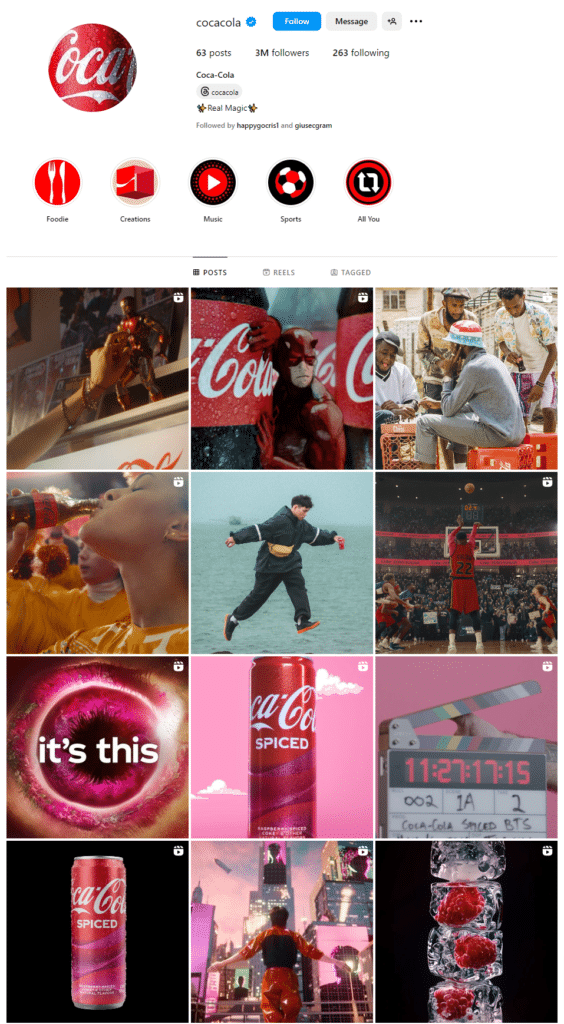We are part of a worldwide consumer movement that forces companies to think carefully at every step.
Each digital marketing strategy and action can echo in every corner of the city, the state, the country, or even the world.
Not only that, the market and many of its competitors are understanding that you don’t create results overnight — you achieve them with a coherent and relevant strategy.
In short, this is the job of managing a brand. The biggest companies in the world have been working on this strategy.
Who has never associated happiness with Coca-Cola?
When you read the phrase “Just do it”, you know which company is running that advertisement, right?
It’s wrong to believe that only large companies use this strategy or that they suddenly built it. Everything is part of a complex management process that does not bring immediate results — it produces lasting results.
Do you want to know more about branding and how to work it so that your company is not just another one in the market? Keep on reading!
This post will cover:
Download this post by entering your email below
What is Branding?
Branding is a way to manage the brand strategies of a specific company.
This brand management includes long-term planning in addition to creating and managing the elements of your visual identity.
All this enhances the perception of your company in the consumers’ minds.
Branding works with the concept that a brand needs to be planned, structured, managed, and promoted. All of these processes that encompass brand management are part of this work.
The goals include:
- Ensure that all your stakeholders understand your position.
- Increase your relevance in the market.
- Enhance your visibility.
- Make your company have a good reputation before the public.
These strategies allow your company to grow sustainably. Branding means ensuring that your business will grow smartly and lastingly.
This management must focus on what your brand is and how it wants to be perceived. Let’s understand more about that!
What is a Brand?
A brand is not just a logo, a name, or a visual identity. It’s a set of feelings and experiences that your audience had and created from your product or service.
Such a process is often individual, as each person understands your brand differently.
This perspective will always be based on each person’s social, cultural, and economic contexts — essentially, on their experiences with their company.
That’s why a branding strategy is essential.
You will never have complete control over how people perceive your company, which means you must differentiate yourself from the competition.
You have to create a unique brand that delivers incredible experiences from start to finish. After all, a brand is what differentiates successful companies from many others that are left behind.
Why did Nike become one of the largest sports brands in the world? The “Just do It” is much more than a tagline or a slogan. It represents management focused on the customer and their actions.
Brands need values, a purpose that guides all their actions. It influences from the conception of a product to its advertising in any communication channel.
When that is well done, the consumer feels it, and your company becomes a market leader, just as Nike is today worldwide.
The Importance of Branding
Your brand is more than just a way to help your products and services stand out from all the others when it’s time for your customers to buy.
It’s also an opportunity to give your company a personality — something your customers can genuinely connect to.
Branding makes your business memorable
Without branding, every soda, car, lipstick, or pair of shoes would be just like every other of its kind. But with branding, those same products become unique, inviting, and utterly memorable.
They become Coca-Cola, Revlon, Toyota, and Nike – iconic brand names that go well beyond the actual products they represent.
They’re experiences that fit seamlessly into the lifestyles of millions of loyal consumers everywhere.
Branding can tip purchasing decisions in your favor
When a customer makes a purchasing decision, they’re choosing more than just the quality and reliability of the product they’re buying.
They’re also choosing everything the brand behind that product represents.
In fact, research shows that a customer will spend up to twice as much money when they feel a personal connection to a brand as compared to those who feel no particular connection.
Branding helps your team feel invested in their work
Memorable, strong brands do more than attract large, loyal followings of happy customers.
Your unique brand identity gives your team members and associates a reason to feel personally invested in what they do, as well.
Strong teams who love their work help the brands they work for achieve even greater success over time.
Key Branding Terms to Know
Part of building a powerful brand means learning the lingo. Here are a few essential branding terms to keep in mind as you continue to develop your current branding strategy.
Brand Identity
Well-crafted brands are more like people than you think in that they’re unique individuals with distinct personalities.
Your brand identity represents that personality, as well as the values, experiences, and takeaways you want your customers to associate with your company.
Brand Recognition
Nearly everyone instantly thinks of “Apple” when they see the illustration of a bitten apple or “MasterCard” when they hear the famous “There are some things money can’t buy” tagline.
They don’t even need to see the company name to recognize the brand on sight.
That’s the magic of brand recognition at work — a consumer’s ability to identify or recall your brand by your brand assets alone.
Brand Awareness
Before someone can consider buying from your brand, they first need to be fully aware that it exists.
Cultivating brand awareness is all about familiarizing your target demographics with your products, services, and brand identity.
Achieve high enough brand awareness, and your brand could become an “it” brand — a brand everyone chooses because it’s popular or on-trend.
Brand Management
Branding isn’t something you do just once before forgetting all about it indefinitely. Brands need to be managed and maintained on an ongoing basis to help keep them contemporary and relevant.
Packaging, visual elements, taglines, and more should be updated frequently to keep the brand fresh and dialed in.
Brand Trust
Brand trust is all about how loyal a brand’s customers are and how much faith they have in that brand.
Do they trust it to provide a reliable, high-value experience? Do they trust your company to treat them right, stand by its promises, and make them proud to buy from you?
Only 25 percent of modern consumers feel confident that bigger businesses will deliver on their promises, so high brand trust is a goal every company should aim for.
How to Build and Manage Your Brand’s Image?
You may have noticed all the complexity that surrounds a brand. Therefore, managing it is no different.
Every company must have many communication channels and professionals involved, from employees to suppliers. Also, you need to attract customers.
To achieve this goal, you need to understand, right from the start, who your company is and its values.
Your brand needs to have a strong and consistent identity, which will improve communication. That helps to leverage and manage the way your audience sees what you are building.
Finally, your branding strategy must guarantee that you promote your brand to ensure more prominence, making it a market leader.
These are the strategies that we will help you create. Let’s learn some essential steps for this process!
A Brand Guide will be very usefull everytime you decide to outsource your content.
1. Start with a round of research (or an audit)
If you’re getting ready to launch a new brand (or rebranding an existing one), the first thing you want to do is some deep research.
Be sure to cover not only your industry but your target audience. You really need to know the niche you’re getting into, as well as the people you’ll be marketing to.
Some key questions to ask yourself include:
- What is your ideal customer like, and what demographics do they belong to?
- What feelings and experiences do you want people to associate with your brand?
- What problems might your audience have that your brand aims to solve?
- What does your brand bring to the table that its competitors don’t?
2. Create a set of customer personas
More isn’t always more when it comes to spreading a marketing canvas.
No brand or product catalog is so good that it’s right for everyone, so it’s crucial to know who your products are really for and to tailor your branding efforts with those people in mind.
It’s also essential to ensure your entire marketing team views your existing and potential customers as people with real lives, personalities, values, and goals.
A well-planned set of buyer personas can make this process simpler, easier, and more natural.
Buyer personas are meant to represent key members of your target demographic. They are fictionalized personalities with jobs, families, goals, and fears, just like real people.
In this way, they make it easier and more intuitive to create truly personalized, on-point marketing material that resonates with the people they represent.
How many different buyer personas a brand might have depends on its size and complexity.
Small or developing companies may only have 1-3, while large corporate entities could have ten or more.
3. Get a solid read on your competition
The goal of a good branding campaign is to stand out — to be unique, do things differently, and move into a niche no one can fill quite the way you can.
That said, you should never imitate your competitors, but you should always be aware of them and their branding strategies.
If you don’t know your competitors and understand how they’ve positioned themselves within the market, then you won’t be in a good position to convince your target audience to buy from you instead of them.
So thoroughly research competitors in your niche and hone in on their marketing tactics. Ask yourself questions like the following throughout the process:
- What makes consumers loyal to this brand?
- What steps have they taken to build a recognizable brand identity that works?
- What are they doing that’s really working for them?
- What are the weak points in their branding strategy?
Use what you discover to identify needs and desires your target audience may have but that are largely going unmet by other brands in your industry or niche.
What can you do that your competitors aren’t? How can you take what’s working for them and do it even better?
4. Create a brand platform
Before diving deeper into defining your brand’s purpose and story, consider this crucial advice from Brianna Dunbar, a podcaster and growth expert: “Don’t start content production at all until you understand your brand story.”
On what basis was your brand founded? What does it promise to deliver to the world? What makes it unique?
A brand platform is a set of components that allow your customers to connect with it. As a consequence, this helps you to communicate your essence.
Purpose, promise, attributes, and positioning are points that any brand platform should encompass. Let’s talk about each of them.
Purpose
A purpose is nothing more than its reason for existing. Why does your brand exist? Why was it created?
At this stage, it’s important to look back at the moment of your company’s creation. What was in the minds of its founders? What did they want to change in the market when they created the company?
This purpose often comes as a phrase that follows the logo and becomes a tagline or a brand slogan.
The purpose of Airbnb, the accommodation marketplace, is to believe that it’s possible to have a world where people can belong anywhere.

When creating Airbnb, its founders believed that this was possible and that the company would be one of the precursors in making this happen.
A purpose is often strong since the beginning of the company, in the first employees.
On the other hand, in Airbnb’s case, this purpose as we see it today only came into existence four years after the company’s creation.
You can learn more about this process in this text by Douglas John Atkin, one of those responsible for creating the Airbnb brand’s universe.
If you don’t know your brand’s purpose, a good idea would be to talk to your employees and consumers.
That way, you will understand why they connect with your company and believe in it. Thus, it becomes easier to get to a perfect point for your brand and your story.
Brand promise
The brand promise works like a manifesto. It’s the summary of what you commit to doing so that your purpose becomes a reality.
The brand promise is what we often see companies communicating. In turn, the purpose is an internal process of discovering and understanding how you can impact the world — a commitment makes it palpable.
Quoting Nike again, the company believes that anyone is an athlete. They are committed to transforming and creating a better and more sustainable world for people, the planet, and communities through the power of sports.
The last part of the sentence is the most important one. How is the company going to do this? Through sports. That is the promise.
If we take Simon Sinek’s Golden Circle, we will clearly understand that the purpose is the why, and the promise is the how.
Brand attributes
Once we understand the purpose and the platform, it’s time to talk about the brand attributes.
These characteristics are part of the journey. They show the unique way of your brand to reach its final goal.
Remarkable brands have unique purposes and promises. Despite this, what often differentiates the great from the average is how they get there. Here, the means are as relevant as the results.
Attributes are characteristics of your brand. These are non-negotiable values that dictate how you communicate to how your employees work.
A few years ago, Asana, a business process management platform, went through a process of understanding and re-creating its brand, a rebranding.
In this process, explained in detail here, the company created its brand attributes, which function as personality aspects — as if it was a person.
After a lot of research with employees to understand what made Asana unique in how it works, they came up with this result:

Clear and action-oriented, these attributes helped the entire company to understand what was expected of its communication and behavior.
It was a huge success for them, and it can be for your company too.
Positioning
We already know that we need a purpose to understand why we exist and that a brand promise makes everything more palpable.
Besides, we know that brand attributes help to humanize a brand and align expectations. However, we still need to talk about brand positioning.
According to Philip Kotler, the father of modern marketing, positioning is creating an understanding of offer and image. That defines the market space your brand will occupy and how consumers will perceive it.
To understand your positioning, you need to think about your business’s goals, its real value, and products. Next, you start to think about your positioning.
A position can focus on innovation, and it is often linked to an idea of disruption.
Take, for example, Uber. When it reached the market, its position focused on innovation, on changing how we relate to transportation.
All of its market movements focused on showing the brand as the new option for transportation — always associating itself with modernity, while the other modes of transportation were obsolete.
With the advancement of other competitors with similar business models, Uber had to adapt to a differentiation position.
Security, price, and better user experience are differentials explored by the company. They give the service provided by Uber a unique value.
Therefore, positioning involves understanding your market, what your consumers need and want.
From there, you need to look inside your company and understand how your product can be present and relevant in that scenario.
5. Have a strong and coherent identity
Large companies are recognized with just one color or icon because they have a brand identity.
This is more than creating a captivating name and a creative logo. That is about creating a universe for your brand that is relatable and unique.
The first step is to create a name and logo for your company, which you probably have already done.
Below, we will focus on some other points that you may not have paid attention to, which are also very relevant to your branding process.
Visual identity
Yes, the logo is part of a visual identity. However, it is just the tip of an ecosystem of elements that give consistency to all your visual communication.
The elements that usually make up a visual identity are three. Let’s see them below!
Colors
Colors make your identity more than just attractive. They can ally with your company’s communication and help it achieve its goals.
You may have heard of color psychology, so you know that each color conveys an idea and arouses certain feelings.
Therefore, when choosing colors for your brand, it is important to return to your brand attributes.
What colors help to communicate those attributes?
It is important to remember that this is not just a process of choice but also maintenance. Red and orange were not associated with MasterCard and red and yellow with McDonald’s overnight. It is a job of repetition and attention to detail.
Here is a good example: anytime you look at McDonald’s account on Instagram, it will be exactly like that, all in the same palette.
That is a way to strengthen the fast food’s identity, working to maintain this universe of colors in the audience’s minds.

Icons, symbols, and illustrations
Among the items that support identity, the logo is the most recognized symbol in a brand.
That has more to do with the way they are made than necessarily with specific symbols or icons.
Here at Rock Content, for example, we work a lot with illustrations. They help us build an identity in support of our institutional identity.
At your company, you can focus on geometric figures more rounded or more square, symbols recognized by your audience, or some other element.
The most important is to create these graphic elements focusing on a cohesive visual identity that will strategically communicate your brand in all touchpoints.
Typography
With or without serifs? Upper or lower case?
If you have already worked with graphic design, you know that these are common questions when setting brand typography guidelines.
Like colors, these details are essential when sending a message.
Generally, brands have primary and secondary fonts. As a rule, the primaries are the typography chosen for the logos, and it is known better.
Who doesn’t recognize Coca-Cola’s typography instantly?
But these are not the only typography. Those we call secondary, or support, are used in other communications such as social media posts and marketing campaigns.
Could you imagine a Coca-Cola Instagram post written all over the main typography? It would be weird, wouldn’t it? So they use some support typographies, as you can see below:
Slogan
Visual processes are not everything; words also have power, and we know it.
Several brands come to mind immediately when associated with their slogans — “I’m lovin it”, “Think different”, “Everyone uses it”, and “Just do it” are just some examples.
Slogans are often created to support brand communication at times when the logo alone is not enough. In many cases, they come as campaign signs.
Some slogans are associated with companies for a long time. Other slogans can change over time to adapt to the strategic brand positioning for the moment the company is going through.
Tone and voice
All that we have worked on so far can help you build a strong identity for your brand. However, there is still an essential point in how brands communicate: the voice.
Look again at your brand attributes and observe the buyer persona your brand wants to reach.
How can you convey these aspects of your company in a way that your persona, with its challenges and tastes you already know, will listen to?
If one of your brand’s attributes is to be an educator, your voice needs to be didactic and accessible.
On the other hand, if your brand is objective, your language cannot be robust or long-winded. The chart below, created by Coschedule, will help you understand how to organize your voice:

It is also convenient to observe the differences between tone and voice. Your voice does not change, as it links to your brand attributes and your company’s foundation.
In turn, your tone will always change since it is the way you adapt your voice to different audiences and channels.
This process of strengthening your identity needs to resonate with every point of your brand.
Your Instagram feed needs to shout this identity, your website needs to communicate effectively and consistently, and your store should have a decoration aligned perfectly with your brand.
Consistency is one of the most difficult parts of managing a brand, but it brings incredible results.
6. Manage your brand and stakeholders
For a brand like yours, which now has some essential elements planned and structured, the next step is to ensure that they work and maintain them.
That is, however, one of the main challenges of most brands, whether large or not.
Taking a look at the map of stakeholders below, we have a macro idea of everything a brand needs to be aware of.
There are many variables, people, and institutions involved, but all of them are extremely important.
Losing attention to any of them can be fatal, especially in the competitive scenario that we are experiencing. So how to take care of each one of them?
The first step is to map them. We are not just talking about having this map taped to the wall, but gathering data about your audience and consolidating it with tools such as a spreadsheet.
What do your customers look like? How do your followers behave on social media? Who are your collaborators?
Mapping and understanding them will help you create strategies for you to achieve your goals with each one.
It is important to remember that each one interacts with your brand in very different ways, so they have different perceptions as well.
Imagine that you have an amazing product, and all your customers love your brand and have only incredible experiences with it.
On the other hand, your company may have gone wrong a few times in hiring, and its reputation as a place to work may not be the best.
You cannot try to reach this audience using the same strategies you use with customers. That is why you need to work every day to maintain the stakeholders’ perception regarding your brand’s universe.
They control your reputation and the future of your company. Brand management is also managing your business’s economic health.
The Importance of Branding in E-commerce
Building your brand is an essential step for e-commerce. Online, you and your potential customers are inundated with marketed brands. From the soda featured in an ad to the colorful makeup palettes for sale, each has its own branding and target audience.
Branding is necessary because it creates trust. It helps make your business memorable and encourages your team to feel more invested in your work. Branding helps your customers know what to expect, and it lets you distinguish yourself from others.
You want your business to appeal to your audience and evoke a specific feeling when they see it. With good branding, you’ll build loyalty and have more return customers.
Finally, with the right branding, you’ll make it clear why your brand is the better choice when compared to the competition.
Branding Tips for Small Businesses
Now that you know the importance of branding, it’s time to think about how you can brand your small business. You have several options ranging from creating logos to working on your brand’s voice when interacting with customers.
Here are several things you can do to make your business stand out and to start building up a loyal audience of customers who will support your business as your brand grows.
1. Show your differences
One of the best tips for branding your small business is to make sure you choose branding techniques that set your business apart from other competitors.
The last thing you should do is try to make your brand look like a competitor’s. You don’t want to mimic other people’s branding campaigns or ideas. You don’t want to accidentally cause your business to be confused with someone else’s.
While mirroring another business might seem like a good way to get your business noticed, it can backfire. You don’t want to confuse your audience and make them wonder if you have a unique business.
You also don’t want to get into legal trouble for not making your business logos or mottos different enough from your competition.
Use your branding to show what makes you different. Don’t be afraid to be unique, because no business is quite the same as yours.
You can lean into your differences to reach a specific audience rather than trying to tap into the audiences cultivated by a different brand’s messaging.
2. Create a memorable brand identity
A memorable brand identity can be a visual or social identity, but you need to create a voice and appearance that is easy to remember. Using color psychology, you can emphasize your brand’s attributes. Using social media, you can build your brand’s voice as you interact with your customers.
It is vital to make your brand identity memorable. For example, think about brands like Nike or Microsoft. They have memorable logos. Microsoft has a recognizable sound associated with it.
Your business can do the same thing to help people recognize when you’re the one promoting a new product or when they’re using a service you provide.
Choose the right kind of brand typography and icons to represent your brand in a positive way. Consider the sounds or theme songs that might work best for your brand. Then, combine them to create a unique brand for your business.
3. Let your customers become your brand ambassadors
Your customers can be your best advocates. Having them become your brand ambassadors is a great step in the right direction.
Consider working with influencers who have medium to large followings to encourage them to share what they think of your brand. Encourage customers to share how they use your products online.
Every share helps build up your brand and improve your brand’s social standing. With many ambassadors sharing positive facts about your business, your business will appear more trustworthy and like a better company to work with and buy from.
4. Be consistent
You have to be consistent with your branding. Once you settle on your brand’s design, don’t change it every month or year. Stick with a consistent logo, brand attitude or voice, and method of communication.
You want people to know your brand is reliable and that it does what it says it will. When you start changing logos or themes, you can confuse your audience.
Of course, there may be times when changes to your branding are required. In that case, consider a change that will last. Longevity is the key to keeping your customers coming back for more.
5. Use your branding to hire
Once you’ve established your brand, it’s time to use your branding to hire people to work for you. Why would you want to do this? The simplest reason is that you want to have people who believe in your brand working for you.
Recruiting people to work for you is easier if they love your brand. They’ll be excited to apply and fill open roles if they believe in what you do and what you stand for.
6. Make your brand unique
One key tip is to make your brand as unique as you can. You want it to stand apart from the competition, not blend in with it.
For example, suppose you have a shoe company that offers custom tennis shoes. In that case, you’ll need to have branding that emphasizes your differences, (i.e.: custom workmanship) and that looks different enough from competitors to be memorable.
Don’t use the same colors as another popular company, and make sure your logo is different enough to be differentiated from other brands.
Wrap Up: Creating and Maintaining a Good Branding Strategy is Crucial
Especially for companies that want to become market leaders. For this reason, it is not a simple process.
When we think about the biggest companies in the current scenario, we know that each one got there because it had a unique proposal, delivered spectacular experiences, and knew how to communicate that.
That’s the big difference between any shoe store and Nike, a beverage brand and Coca-Cola, and streaming platforms and Netflix.
They all deliver incredible products, but it is the power of their brands that makes them unbeatable. It makes their consumers buy more and more from them and not from their competitors.
From now on, you probably have the tools to do a good job on branding, transform your brand, and win over the market and its customers even more.
How about starting to apply the concepts of branding management, creating a Content Style Guide to make sure all of your employees are following the brand guidelines? Take our assessment now!








![[ROCK NA] [EBOOK SEO] Complete Guide](https://rockcontent.com/wp-content/uploads/2024/06/banner_Search-Engine-Optimization.png)






